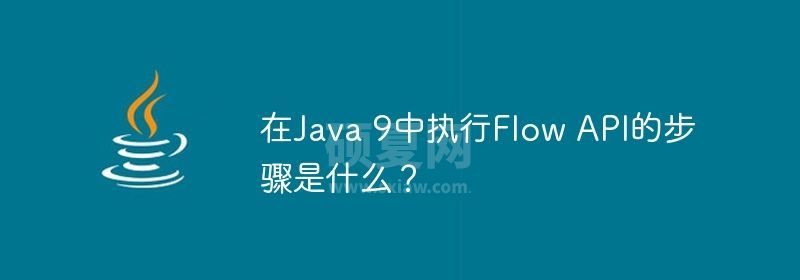在Java 9中执行Flow API的步骤是什么?

Flow API在Java 9中对应于Reactive Streams 规范,这是一种事实上的标准。它包含了一组最小的接口,捕捉了异步发布和订阅的核心。
以下是Flow API的关键接口:
1) Flow.Publisher:它为订阅者生成要消费的项目,它只包含一个方法:subscribe(Subscriber),其目的应该是显而易见的。
Syntax
<strong>void subscribe(Flow.Subscriber<? super T><!--? super T--> subscriber)</strong>
2) Flow.Subscriber: It subscribes to publishers (usually only one) to receive items (via method onNext(T)), error messages (onError(Throwable)), or a signal that no more items are to be expected (onComplete()). Before any of those things happen, the publisher calls onSubscription(Subscription) method.
Syntax
<strong>void onSubscribe(Flow.Subscription subscription) void onNext(T item) void onError(Throwable throwable) void onComplete()</strong>
3) Flow.Subscription: The connection between a single publisher and a single subscriber. The subscriber can use it to request more items (request(long)) or break the connection (cancel()).
Syntax
<strong>void request(long n) void cancel()</strong>
Flow API的执行步骤:
- 首先,我们需要创建一个Publisher和一个Subscriber。
- 使用Publisher::subscribe订阅Subscriber。
- Publisher创建一个Subscription并调用Subscriber::onSubscription,以便Subscriber可以存储订阅。
- 在某个时刻,Subscriber调用Subscription::request来请求一定数量的项目。
- Publisher通过调用Subscriber::onNext将项目传递给Subscriber。它不会发布超过请求的项目数量。
- Publisher可能在某个时刻遇到问题并分别调用Subscriber::onComplete或Subscriber::onError。
- Subscriber可以每隔一段时间请求更多项目,也可以通过调用Subscription::cancel来断开连接。
以上就是在Java 9中执行Flow API的步骤是什么?的详细内容,更多请关注其它相关文章!
